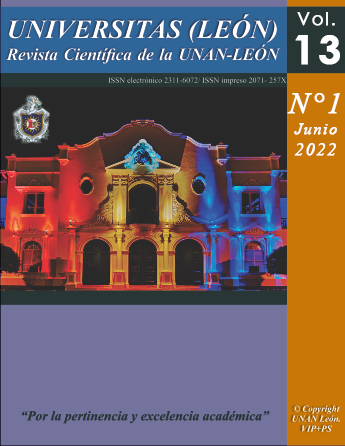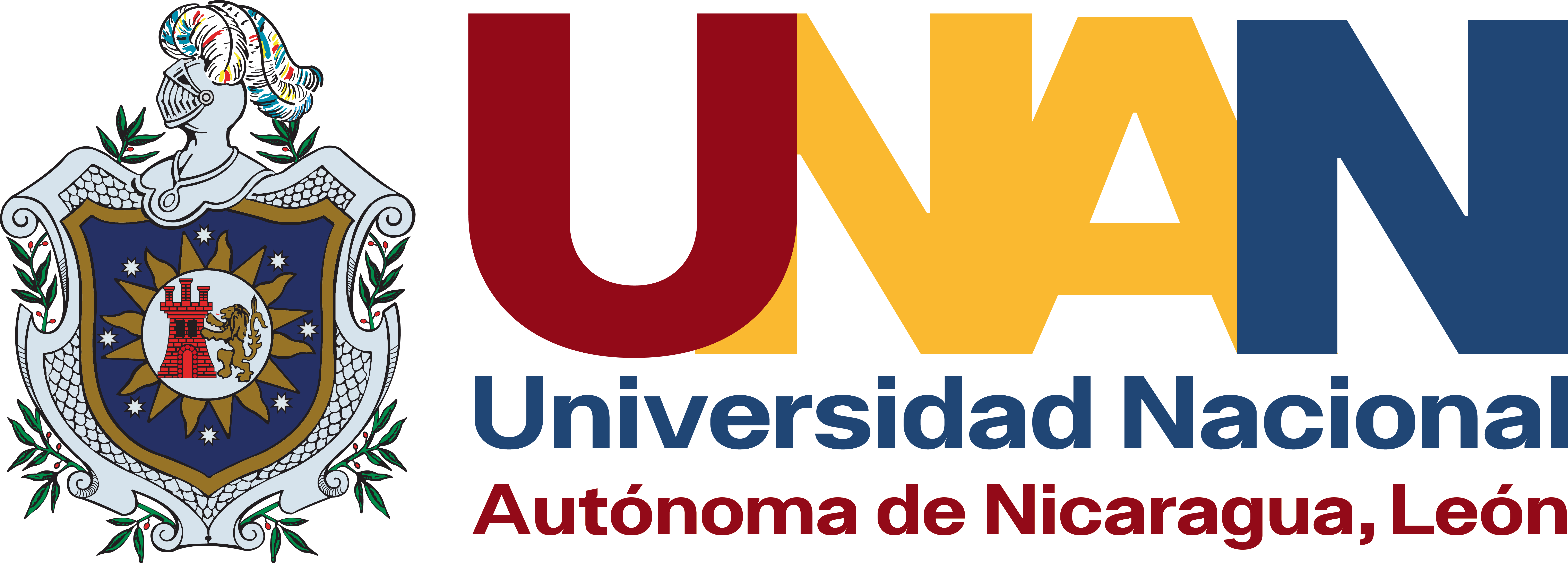Identification of social networks for the construction of local historical memory
DOI:
https://doi.org/10.5377/universitas.v13i1.16650Keywords:
Historical memory, territorial node.Abstract
The purpose of this paper is to present the preliminary results of the research project: Social networks as a methodological model for the construction of the meanings of local historical memory: Chinandega 1960/2020, associated with the first objective, which it implied: identifying the nodes of social networks to be integrated, discuss the theoretical and legal elements of support for it, the selection of the informants required for its realization, as well as being able to determine the methodology and dynamics of the functioning of the social network organized to develop the study. In the methodological part, a territorial social network was identified and configured, which allowed establishing the territorial nodes, relying on the technique of observing the communities that make up the municipality, likewise the components that make it up were identified; The results that are presented correspond to the first specific objective of the investigation, they are related to the identification of the social network that will serve as support, for the construction of the historical memory of the municipality of Chinandega. The configuration process of this social network from the definition of thirteen territorial social network nodes, The design for the construction of the historical memory of a locality based on social networks, from the conceptions, techniques and instruments of various methods: history regional and local, historical memory, oral history and documentary review, which are combined to recover the memories of a society of a period settled in a territory of a regional or local scope.
Downloads
References
Asamblea nacional de nicaragua,2014,constitucion.pdf (asamblea.gob.ni)46-49, Asamblea nacional de Nicaragua, 1988,LEY DE MUNICIPIOS (asamblea.gob.ni)art 1-7
Beunza, J. M. I., & Ruiz, L. A. (2011). Redes sociales y correspondencia epistolar. Del análisis cualitativo de las relaciones personales a la reconstrucción de redes egocentradas. Redes. Revista hispana para el análisis de redes sociales, 21, 98-138. 2011 http://revista-redes.rediris.e https://doi.org/10.5565/rev/redes.419
Banco Central de Nicaragua,2018,Chinandega.pdf (bcn.gob.ni)13-22
Benadiba, L. (2015). Historia oral: reconstruir historias únicas desde la diversidad. Revista Confluências Culturais, 4(2), 90-99.https://doi.org/10.21726/rccult.v4i2.206
Colina, C. L. (1996). La teoría de las redes sociales. Papers: revista de sociología, 103-126.https://doi.org/10.5565/rev/papers/v48n0.1814
Diéguez, A. J., & Guardiola, M. P. (1998). Reflexiones sobre el concepto de comunidad. De lo comunitario a lo local. De lo local, a la mancomunidad. Buenos Aires, (Argentina). P3
Escalante Turcios. Pablo Jose,2011, Chinandega tierra de Agateyte: configuración inicial de una región Histórica, tesis de maestría de estudios históricos de América Latina y el caribe, UNAN-Managua p 130
Fernández Collado, C., Baptista Lucio, P., & Hernández Sampieri, R. (2014). Metodología de la Investigación. Editorial McGraw Hill. -415
Halbwachs, M., & Díaz, A. L. (1995). Memoria colectiva y memoria histórica. Reis, (69), 209-219. INIDE,2005, Censo de población, cifras municipales, Microsoft Word - CHINANDEGA (inide.gob.ni) Inide,informeChinandega.pdf (inide.gob.ni) p-4.https://doi.org/10.2307/40183784
Lozares Colina, C. (1996). La teoría de redes sociales. Papers: revista de sociología, (48), 103-126. Molina Jiménez, I. (2000). De la historia local a la historia social: algunas notas metodológicas Reina, L. (1992). Historia regional e historia nacional. Historias, 29, 131-141.https://doi.org/10.5565/rev/papers/v48n0.1814
Rubio Sánchez Manuel, 1976, Historial de El Realejo, talleres de editorial y litografía san José S.A. Promoción cultural Banco de América-p-50
Romero, Ramón, (1953), Chinandega, tipografía HEUBERGER, Managua, Nicaragua
Sánchez Balmaceda, María Isabel (2002) Análisis de redes sociales e historia: Una metodología para el estudio de redes clientelares. [Tesis] Análisis de redes sociales e historia: Una metodología para el estudio de redes clientelares - E-Prontas Complutense (ucm.es) (20).
Serrano Álvarez, Pablo. La historia local en América Latina Tendencias, corrientes y perspectivas en el siglo XX. Historelo.rev.hist.reg.local [online]. 2009, vol.1, n.1, pp.07-32. ISSN 2145-132X. Histórielo (scielo.org.co).https://doi.org/10.15446/historelo.v1n1.9428
Tapia, V. (2013). El concepto de barrio y el problema de su delimitación: aportes de una aproximación cualitativa y etnográfica. Bifurcaciones, 12, 1-12. (pagina4
Thompson, P. (2004). Historia oral y contemporaneidad. p-22-24
Turcios, P. J. E. (2021). Elementos conceptuales para la construcción histórica de una localidad. Revista Científica de FAREM-Estelí, 4-19.https://doi.org/10.5377/farem.v0i0.11604
Downloads
Published
How to Cite
Issue
Section
License
Copyright (c) 2022 National Autonomous University of Nicaragua

This work is licensed under a Creative Commons Attribution-NonCommercial-ShareAlike 4.0 International License.
Copyright © 2025 Universitas (León), Revista Cientifíca de la UNAN-León. Academic Direction. Research Department. Publication and Scientific Event Unit.










